The following information provides a list of exterior house sidings and veneers that are available and used in today's market. Please note that the list is in alphabetical order and by no means is the order meant to suggest a preference in installation or quality. It should also be noted that there are many manufacturers of each of the sidings and veneers and there specifications as to the life of the material, guarantees warranties, accessories and fittings will vary dramatically. Always compare the specific warrantees, guarantees and specifications of each of the manufacturers.
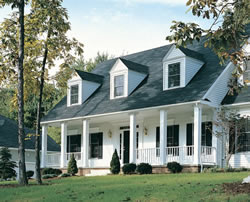
Aluminum Siding:
The old standby, aluminum siding. While many homeowners believe that aluminum siding is outdated and has been replaced with vinyl siding they are incorrect.
Aluminum siding has some advantages over vinyl siding. It is a fireproof material, holds it shape during installation and it is environmentally friendly - especially when compared to vinyl siding.
Aluminum siding is easy to install for any home handyman that owns a pair of tin snips and a hammer.
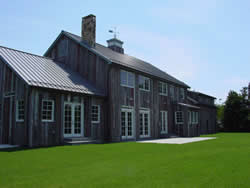
Barnwood:
Barnwood siding is lumber material that has been removed from older buildings. This makes barnwood siding an excellent choice for those homeowners that are concerned about the environment.
Once the wood siding is removed from an old building it should undergo three processes before it is used on a home; surface cleaned, is the removal of all of the nails, screws and other foreign objects that may have remained in or attached to the lumber; surface washed, under high pressure removes the years of dirt and grime that may have accumulated not only on the surface of the barnwood boards but may have lodged in the grain itself and Kiln dried not only stabilizes the lumber but ensures that any insects and or insect larva that may be present in the boards have been removed.
On homes barnwood siding is usually installed vertically.
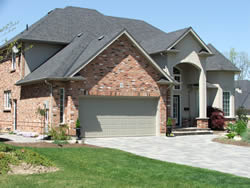
Brick Veneer:
Brick is made by applying a very high heat to clay, known as firing, that has been molded in a rectangular block shape.
It is available in a variety of colors and face textures. Bricks are laid into position (installed) by using mortar on the sides, bottom and top of each brick.
Bricks have an exceptionally long life, hundred's of years, although depending on your climate, some repair to the mortar and replacement of some bricks may be necessary after 25 to 30 years.
As a general statement, bricks cannot be used as a retro-fit on a home that does not have a foundation designed for bricks.
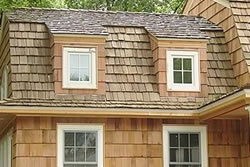
Cedar Shake:
Most people consider cedar shakes to be a material used for roofing. However, if the aesthetics are right, country lot and landscaping, there is no reason that cedar shakes cannot be used on walls.
Light weight, easy to repair, replace and maintain, cedar shakes are an excellent choice for the home handyman, who works alone and may not be equipped with a lot of high priced power tools.
There are three or four color choices and levels of quality.
Additional information on the installation of cedar shakes as siding

Cement Fiber Siding:
If you like the look of wood siding, but are not impressed with the maintenance, a product to consider is cement fiber siding.
Cement fiber siding is made to appear as clapboard (wood siding), natural stone and stucco. It is extremely durable (some products have a 50 year warranty) and is rot, fire and termite resistant.
The picture on the left shows the versatility in the appearance of the cement fiber siding. At the far left of the home, the siding appears to look like natural stone and on the front of the home it appears as wood siding.
Cement fiber siding is relatively easy to install with some specially designed hand tools.
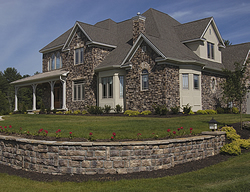
Cultured Stone:
Cultured stone is created by molding aggregate with a cement. As a molded product it duplicates many varieties of stone, from slate to rocks. The finished product looks identical to natural stone but is less than a quarter of the weight making for easier, more efficient and economic installation.
The cultured stone veneers are available in many textures and colors.
Installation is accomplished in the same manner as stucco, using a wire mesh nailed to the wall and mortar to hold the stones in place.
Although it is easy enough for the home handyman to install, the challenge is in mixing the shapes to produce a pleasingly aesthetic finished project.
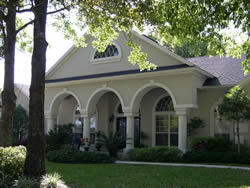
EIFS (Synthetic Stucco):
EIFS is a synthetic stucco product that is spread on over a foam insulation base. It is a highly controversial product as over the years it has been responsible for severe home damage, caused by water getting behind the foam underlayment.
However, the manufacturers and installers have modified their installation techniques and added a number of trim pieces which appears to have corrected the problems.
The finished product is quite aesthetically pleasing and if installed correctly should provide a reasonable life as a siding product.
